The advantages and disadvantages of MA (Marketing Automation) tools
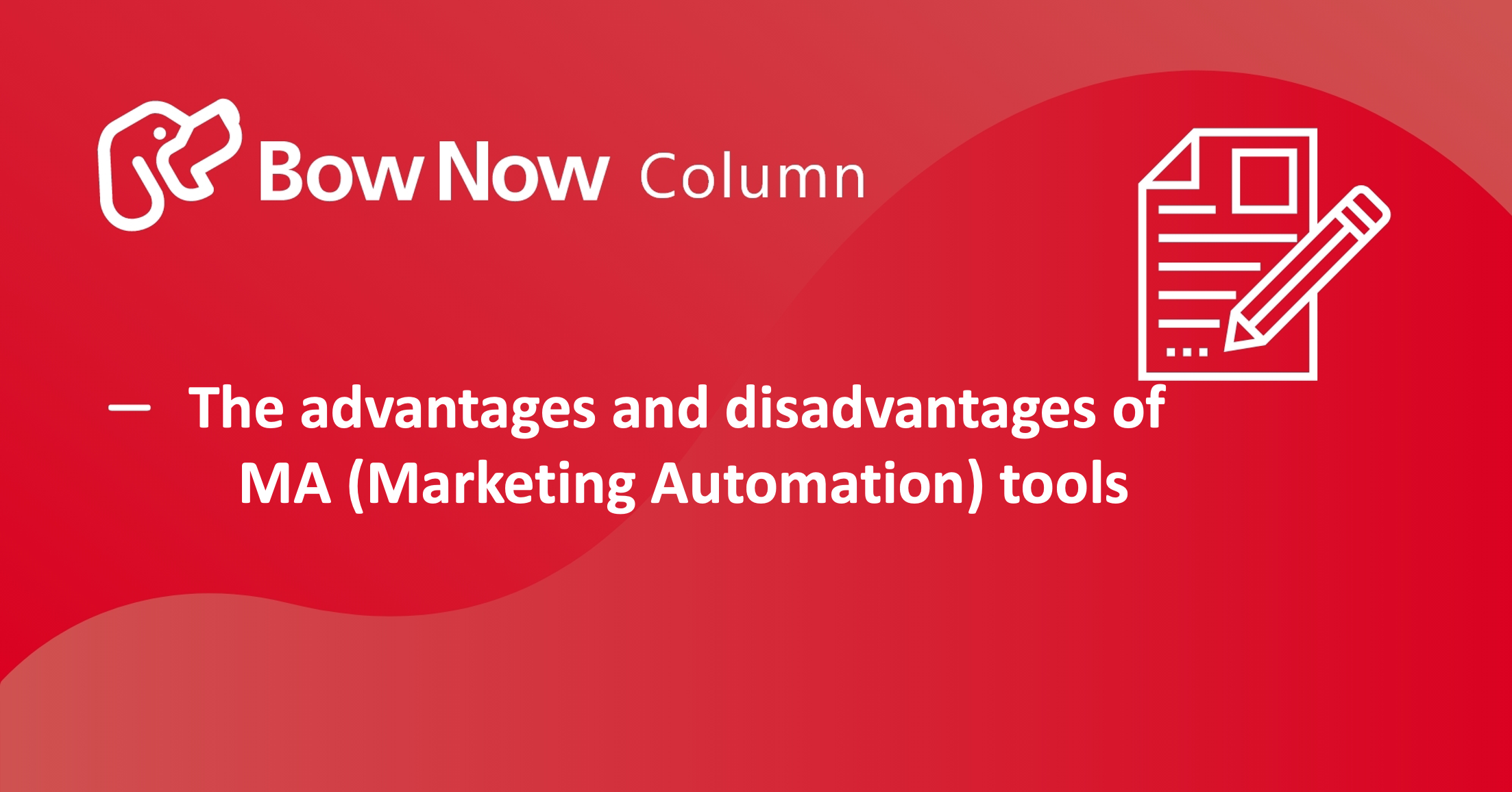
MA (Marketing Automation) tools have various advantages. If operated properly, they can significantly improve marketing activities and have tremendous benefits, such as efficient customer management, appropriate customer approaches, and man-hour reductions. However, on the other hand, they also have disadvantages, so it is necessary to operate them with a clear understanding of both.
In this article, we will introduce MA (marketing automation) tools in detail, including basic functions and what can be achieved through operation, in addition to the advantages and disadvantages of implementing MA tools.
- The advantages of MA tools.
- The disadvantages as well as the advantages of MA.
- The basic functions of MA tools.
Table of Contents
What is a MA (Marketing Automation) tool?
- #1: Diliver approapriate information to prospective clients and build good relationships
- #2: Sales and marketing departments can manage prospects with the same awareness
- #3: Inmroved order and deal closing rates, leading to increased sales
- #4: Reduction of man-hours in sales and marketing operations
- #1: Prone to lack of resources
- #2: Need a sysrem to continue to create content
- #3: Costly
- #4: List needs to be daramined and migrated
The Basic Functions of MA Tools
- 1: Prospective customer management function
- 2:Web access analysis function
- 3: E-mail distribution function
- 4: Scoring function
- 5: Form creation function
The Points to keep in mind when implementing Marketing Automation
What is MA (Marketing Automation) tool?
Before explaining the advantages, let's first look at an overview of MA (marketing automation) tools and the differences between them and similar tools, SFA and CRM.
What is an MA tool?
An MA (Marketing Automation) tool is a tool that automates marketing activities centered on customer acquisition and business meeting generation.
There are various types of MA tools. Some are expensive and highly functional, provided by global IT vendors, while others feature simple functions and low cost, targeting small and medium-sized companies. The following are some of the main functions of MA tools:
- The ability to centrally manage and sort lead information collected from various sources
- The functions to understand how prospects are behaving online (e.g., tracking and log analysis functions)
- The functions to automate marketing activities based on each lead's behavior (scenario creation, scoring functions, etc.)
- The functions to assist with content creation and marketing activities (email distribution, form creation, etc.)
MA tools can be said to be tools for efficiently carrying out the process of nurturing and sorting out prospective customers while utilizing the functions described above.
Now, let's look at the differences between "SFA" and "CRM" in order to clearly understand MA tools.
The Differences with SFA and CRM
SFA (short for Sales Force Automation)" refers to tools to support sales activities, while "CRM (short for Customer Relationship Management)" refers to tools to build good relationships with customers.
These three tools, including MA, are known as marketing support tools, but each target difference audiences as below;
- MA: MQL=a potential customer who is in the stage of interest or information gathering
- SFA: SQL = prospective customer who is in the stage of negotiation or proposal
- CRM: Existing customers who have already done business with you once.
In addition, MA tools are mostly used in marketing departments, where the emphasis is on conducting marketing activities more efficiently. SFA and CRM, on the other hand, have many overlapping functions since both are utilized in the sales department and aim to improve results and customer satisfaction by organizing sales activities. It is important to understand that MA tools and SFA/CRM have very different purposes.
So, what specific advantages and disadvantages can be gained by utilizing MA tools? We will introduce them in the following sections.
The Advantages of MA Tools
The main benefits of using MA tools are "building good relationships with potential customers," "enabling sales and marketing departments to manage potential customers with the same awareness," "increasing sales by improving order and deal conversion rates," and "reducing man-hours in sales and marketing operations.”
This chapter details the advantages of each
#1: Deliver appropriate information to prospective clients and build good relationships
One of the most important objectives of MA tools is to nurture prospects.
This is based on the concept of "demand generation," which describes a marketing process that involves the creation and discovery of prospective projects through three processes: (1) lead generation (acquisition of prospects), (2) lead nurturing (cultivation of prospects), and (3) lead qualification (selection of prospects).
MA tools enable analysis of where prospective customers look on a website, who downloads what materials, and other behaviors, so that product and service providers can deliver information and content of interest to prospective customers at the right time.
Customers also benefit from having information that they want to know and that is useful to them. Having the right information at the right time improves the customer's impression of the company and increases his or her willingness to buy.
Customer testimonials that have led to results with proper email distribution
We have also been able to visualize what customers are interested in based on their reactions to the e-mails we send out. We are now able to formulate content strategies based on this data, and we have been able to rotate the cycle of implementation and verification, which has been a very positive experience.
Reference:Entering a new industry, starting with zero customers. With the generous support, the company's internal sales strategy and structure changed! |Kawahara Giken Co.
#2: Sales and marketing departments can manage prospects with the same awareness
One of the most frequently cited inter-organizational challenges is the discrepancy between the marketing and sales departments.
For companies that have a marketing department for customer acquisition, the marketing department generally gathers leads (personal information on potential customers) from various sources through trade shows, seminars, web marketing, etc. The leads are nurtured by the marketing and inside sales departments until they reach a certain level of interest. The collected leads are nurtured through the activities of the marketing and inside sales departments until they reach a certain level of interest, and then passed on to field sales (sales department) when the need becomes apparent. However, the marketing and sales departments are not unified in their awareness, which often leads to misunderstandings such as "sales does not pursue marketing leads" or "marketing leads are not hot.
In response to such issues, MA tools can objectively set conditions for HOT leads, thereby preventing misalignment due to differences in perception between the marketing and sales divisions. Of course, when setting the conditions for HOT leads, it is important for the marketing and sales departments to share their opinions and adjust the conditions to satisfy both parties.
# 3:Improved order and deal closing rates, leading to increased sales
As introduced in the previous section, a common method of operation in B2B is to use MA tools to nurture prospective customers and hand them over to the sales department when they are in a HOT status.
Compared to customers who are approached from scratch by the sales department via door-to-door sales or telephone interviews, customers who are nurtured through MA tend to have a higher order and deal conversion rate because they have already been raised to a certain level of interest and are passionate about a product or service.
In today's world, where people can search for information in advance when purchasing any product or service, extracting a list based solely on industry and regional attributes and conducting one-way sales will not yield as great results as it used to. It also contributes to the establishment of an efficient sales method that meets the needs of the modern age.
#4:Reduction of man-hours in sales and marketing operations
MA stands for Marketing Automation.
As the name "automation" implies, its greatest appeal is its ability to "automate" marketing tasks. The following are some of the items that can be automated. These tasks can be streamlined by MA tools, thereby reducing man-hours spent on sales and marketing operations.
- Create a list
Leads obtained from both offline and online activities can be centrally managed and then extracted according to various criteria. There is no need to create a new list for sales
- e-mail distribution
You can automatically send out emails that match the response of your prospects, or automatically send out step emails on a scheduled schedule.
- Notification and assignment to sales
When a prospect takes an action that meets the criteria for a HOT lead, sales can be notified or an assignment email can be sent automatically.
- Lead Qualification
You can select HOT leads by setting objective criteria, rather than relying on sales experience and instinct.
- Reporting
Automatically measure and collect the results of marketing initiatives, such as the number of document downloads, seminar applications, page views, etc.
Testimonials from customers whose business negotiations were actually streamlined by MA
By using digital tools, we can efficiently acquire new customers and hand them over to our sales staff at a point where we have a high degree of certainty. As salespeople, we feel that MA is a very innovative tool because we were able to experience that "we can compete only in areas that are quite close to business negotiations.
Reference:MA's high versatility and low cost were decisive factors in its introduction. Achieved a deal from an inquiry with the first e-mail distribution! |Will Communications Inc.
Disadvantages of MA tools
While MA tools have many advantages, they also have disadvantages. It is important to understand the disadvantages beforehand so that you can deal with them properly.
#1:Prone to lack of resources
Although this may be in conflict with the "man-hour savings" mentioned in the previous section, the range of marketing initiatives is extremely broad, and because these activities require continuous improvement and refinement, small companies may find themselves short on resources.
This is especially important if you do not have a dedicated marketing staff or if you have only one marketing person. In such cases, we recommend avoiding the introduction of highly complex and sophisticated MA tools from the start, and instead choosing tools that are simple and can be utilized immediately.
#2: Need a system to continue to create content
Content marketing is a particularly essential part of the activities that utilize MA tools to nurture prospects. Content marketing is the activity of nurturing the needs of prospective customers by creating and disseminating content that is valuable to them. This includes email newsletters, business blogs, white papers, and other text materials, as well as videos.
In order to nurture prospective customers and analyze their behavior, it is necessary to continuously disseminate these contents through a PDCA cycle, but creating quality contents takes time and money. When working on MA, it is necessary to create a system that can convert in-house expertise into content and continue to disseminate it.
#3:Costly
Naturally, there are costs involved in implementing an MA tool, such as license fees and monthly usage fees. The cost of implementing the tool itself varies depending on the product, but in general, high-performance MA tools provided by global vendors are expensive to implement, while Japanese vendors have released products with functions and price ranges that are easy to implement for small and medium-sized companies.
In addition to implementation costs, various other costs are incurred depending on the nature of the activity, such as personnel costs for marketing personnel, production costs for content creation, and advertising and promotion costs to increase the population of leads. When implementing MA tools, it is important to estimate the expected benefits and make appropriate investments according to the phase.
#4:List needs to be datamined and migrated
MA tools are systems that enable centralized management of leads collected offline and online, but MA tools by themselves cannot automatically capture lead information acquired offline (e.g., business card exchanges at exhibitions). Therefore, it takes time and effort to define items and rules, and to convert business cards into data.
In addition, when importing lists that were previously managed by other tools such as CRM or SFA into the MA tool, it is necessary to export them to a file such as CSV and process the data according to the MA tool before importing. If an existing customer list contains outdated or duplicate customer information, a process called "name matching" or "data cleansing" is required to maintain the data, which requires a certain amount of man-hours.
The Basic Functions of MA Tools
Now that you know the advantages and disadvantages of MA tools, what specific functions do they provide?
1) Prospective Customer Management Function
The Prospective Customer Management function allows you to manage basic customer data.
The information that can be managed includes data such as the department/position of the prospective customer and the type of business, annual sales, and number of employees of the company to which the customer belongs. In addition, you can categorize information such as communication history with customers, the degree of consideration of each, purchase probability, scoring, etc. Depending on the tool, you can also customize the data items to be managed.
2) Web access analysis functions
The Web access analysis function is a function that allows you to identify potential customers who have visited your website and analyze their behavior and other information. It is no exaggeration to say that this is one of the most important functions of MA tools.
In addition to confirming the access history of "who/when/what content/how much" on the company's website, it is also possible to pick up "companies that have shown interest in the company's products" and make a tailored approach to customers.
The information obtained from access analysis is also useful in improving the website.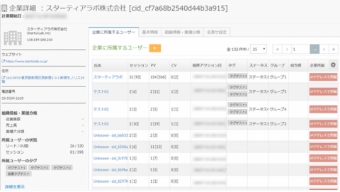
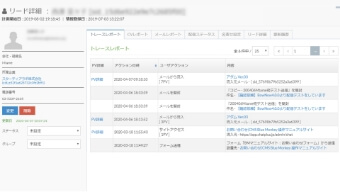
3) E-mail distribution function
MA tools include a variety of functions related to e-mail distribution. Since e-mail is an indispensable means of communicating with potential customers, the e-mail distribution function is very important.
This feature allows you to not only send the same email to everyone at once, but also to send more precise content to the relevant audiences. It is also possible to extract clickers of URLs in e-mails, measure effectiveness such as open rates, and perform A/B testing.
By distributing emails that are tailored to the interests of your target audience, you will be able to better capture the attention of your customers.
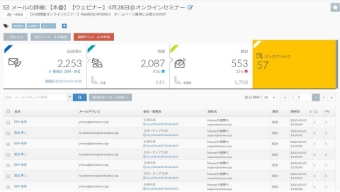
4) Scoring function
The scoring function checks for prospective customers with high purchasing intent by assigning scores to customer behaviors and attributes.
For example, a score is assigned to each action such as "opening an e-mail," "clicking on a URL," and "downloading materials. Customers who perform all of these actions receive a high score, which objectively indicates that they are highly motivated to purchase.
By handing over high potential customers to the sales department, leading to more efficient sales activities.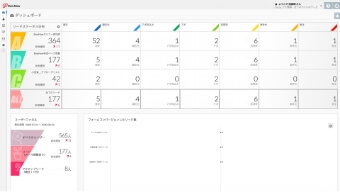
5) Form Creation Function
Some MA tools include the ability to create contact forms and other forms.
With this function, anyone can easily create forms without any technical knowledge. Once the form is implemented, newly acquired leads are automatically registered, thus improving work efficiency and preventing registration omissions at the same time.
There are also MA tools that can be used to create seminar pages, simple LPs, etc., so be sure to check them out when implementing them.

What MA tools can do for you
Now that we know that MA tools have a variety of basic functions to streamline marketing activities, what can we achieve by actually using them? The following is an explanation.
1) Lead Generation
One of the most typical things that can be done with the operation of MA tools is "lead generation". Lead generation refers to activities to acquire prospective customers.
By fully utilizing MA tools, web advertising, form functions, content, and SEO, you can effectively acquire prospective customers who has high intent to purchase
2) Lead nurturing
Lead nurturing" refers to nurturing leads acquired through lead generation. By operating an MA tool, you can step up the purchasing phase of your leads.
Lead nurturing involves nurturing leads by providing information and clarifying their questions, etc. By utilizing MA tools, you can optimize your approach to each lead and increase the lead's willingness to buy more effectively.
3) Lead Qualification
MA tools can be utilized for Lead Qualification Lead qualification refers to the selection of prospective customers with a high level of willingness to purchase.
By utilizing the scoring function, a basic function of MA tools, to conduct lead qualification, it is possible to select leads with a high likelihood of leading to purchases and contracts, and pass them on to the sales department for highly productive sales activities.

With the explanation so far, some of you may be thinking, "Let's implement an MA tool! I am sure that some of you may be thinking, "Let's try to implement MA tools! For those who have, here are some points to keep in mind when actually implementing MA tools.
The Points to keep in mind when implementing Marketing Automation
The following are two points that require special attention when implementing MA tools.
Select the right tool for your business
Since a variety of MA tools are now available, it is necessary to select a tool with an emphasis on whether it "fits your business. In particular, MA tools can be divided into two types: "for B2B" and "for B2C," so it is important to understand the characteristics of each.
For example, the most important objective of a "B2B" tool is to "pass leads with high purchasing intent to the sales team. Therefore, quality and accuracy are required for scoring functions that can objectively evaluate the purchase probability of potential customers, and segment functions that can extract leads with a high probability of purchase.
In the "for B2C" tool, the services and products to be purchased will vary depending on the lead's location, age, interests, and so on. Therefore, high-performance e-mail delivery functions are required, such as setting the time of delivery, contents, extracting clickers of URLs in e-mails, and measuring effectiveness such as open rates. It is also advisable to have a form creation function that does not cause stress to the customer.
Be clear the challenges you want to solve
Before actually implementing an MA tool, it is always necessary to "clarify the issues you want to solve" because each MA tool has its own characteristics, and by clarifying the issues beforehand, you can select the most effective tool to solve them.
Specifically, identify the "details of operations that you want to automate because they cannot be handled by humans alone" and "the volume of information you are currently handling," and extract the issues from among these. It is a good idea to select an MA tool that specializes in those issues.
Summary
As we have shown, MA tools have various advantages and disadvantages, and when considering the introduction of MA tools and other tools to support marketing, it is important to understand the advantages and disadvantages of each tool before selecting the tool that best suits what you want to do, the man-hours you can spend on marketing initiatives, and your budget. And then budget for your company's marketing activities.


.jpg)
.jpg)
.jpg)


